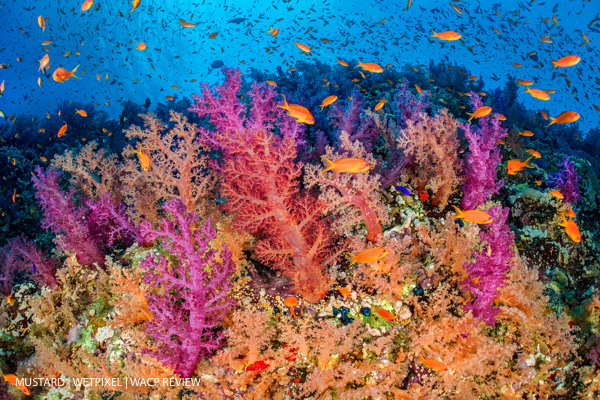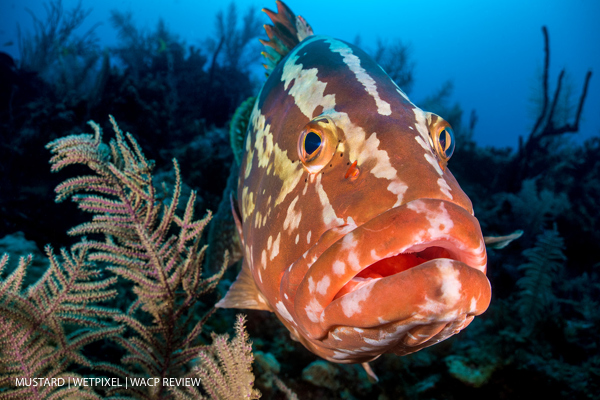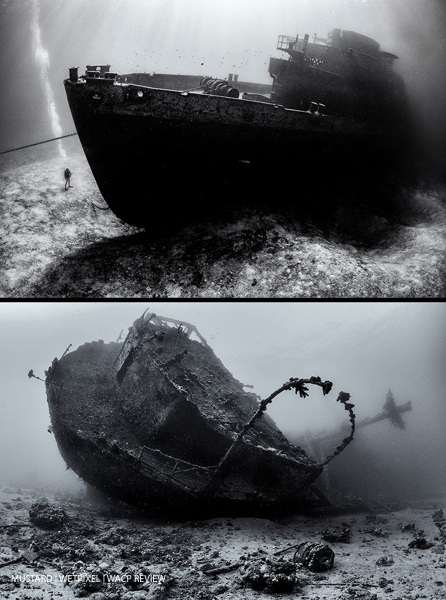Review: Nauticam Wide Angle Corrector Port
Introducing Nauticam’s WACP - The Wide Angle Corrector Port
By Alex Mustard
Alex Mustard presents a detailed examination on the philosophy behind and the performance of Nauticam’s forthcoming Wide Angle Corrector Port - WACP, a product aimed squarely at serious full frame stills and video shooters. Alex introduces this new product, explaining why a water contact lens offers advantages over dome ports (in plain English, wherever possible), and shares thoughts, data and a portfolio of images that may change the way we think about achieving maximum image quality underwater.

WIDENING THE BOTTLENECK
As I settle down to write this, Nikon have released the new D850 with 46MP and according to my Facebook feed, scores of my friends have found their new camera and are busy emailing manufacturers telling them they need the housing now, or ideally yesterday. Nikon, Canon and Sony all now offer full frame still cameras that exceed 40 megapixels and for our video shooting brethren, the message from their manufacturers is that you are wasting your time pressing record if it is only 4K, even more resolution is clearly the future! And while those with older cameras might chuckle at this pixel chasing, I think we’d all like our best shots to be captured at the optimum quality, in the highest possible resolution.
A consequence of ever increasing resolutions is photographers can look deeper into the detail of their images than ever before. And we don’t always like what we see. As a result, we’ve all become a pickier about image quality, not only compared to when we squinted through a loupe on a Lightbox, but also compared with digital cameras of just a few years ago. It’s understandable that when we’ve invested in the latest and greatest camera we want to extract its full performance underwater.
There’s an old saying in underwater photography that if you want better pictures, don’t buy a better camera, but spend your money on diving in better water! But jokes aside, as long as we are close to the subject, as good photographers invariably are, the problem is rarely the water, but the optical problems of shooting underwater. Therefore, the biggest bottleneck to image quality is not the water itself, but the barrier between the air inside the housing and the water beyond (and what shooting through this does to the image quality.)
A dome port is the typical solution in wide angle photography. Domes have many pluses, but by making the air-water interface curved they introduce some serious degradation to our image quality. The most common manifestation, that we are all familiar with, is the blurring of detail in the corners of wide angle photos. This problem is most prevalent on full frame cameras, with small dome ports, incorrectly positioned dome ports, at more open apertures and with rectilinear, rather than fisheye, lenses.
It is this problem that Nauticam is addressing with their new Wide Angle Corrector Port, which uses fully corrected water contact optics to tackle the limitations of a dome port. The aim is to create a wide angle zoom, with a maximum field of view (FOV) of 130˚, which is wider than either the Canon 11-24mm (126˚ FOV) or Nikon 14-24mm (114˚ FOV), that also produces excellent underwater image quality across the frame, even at more open apertures.

WHAT IS THE WACP?

The WACP is a lens and a port all in one. It is designed to be used in front of a standard land lens (up to 28mm on full frame, which provides the autofocus, exposure control etc.), while the WACP corrects the lens to see perfectly underwater and expands it into a wide angle with a field of view to 130˚, introducing some mild barrel (fisheye) distortion. To perform this transformation the WACP contains multiple elements of high quality optical glass – about 3 kg worth or well over 6 lb, all there to deliver excellent image quality underwater.
If you are familiar with Nauticam’s WWL-1 lens, you can think of the WACP as the pro version, intended expressly for full frame stills and high-end cinematography. Like the WWL-1, the WACP is designed to work with lenses with a field of view up to 75˚ (14mm on M43 or 28mm on FF). This gives plenty of options for full frame photographers, including 28mm prime lenses and zooms, such as the 28-70mm. However, lenses with really large front elements don’t work well with the WACP, and physically smaller lenses actually give the better results. Nauticam initially favored Nikon 28mm primes (f/1.8 and f/2.8) in their tests, while in the field, I favored the versatility of a 28-70mm (f/3.5-f/4.5), which becomes a 130˚ to 57˚ FOV lens (for comparison the Canon 11-24mm is 126˚ to 84˚ FOV and Nikon & Canon 16-35mm are 107˚ to 63˚ FOV).
So far the testing has been Nikon biased, but the WACP is not restricted to any brand of camera or specific lenses. Also, like the popular SMC, there is no reason that the WACP can’t be used with any housing brand (with an appropriate adaptor).

Page 1: Underwater optics issues and the WACP.
Page 2: How optics work underwater and dome ports.
Page 3: Water contact lens advantages and image results.
Page 4: Jason Isley’s comments, ocean images and conclusion.